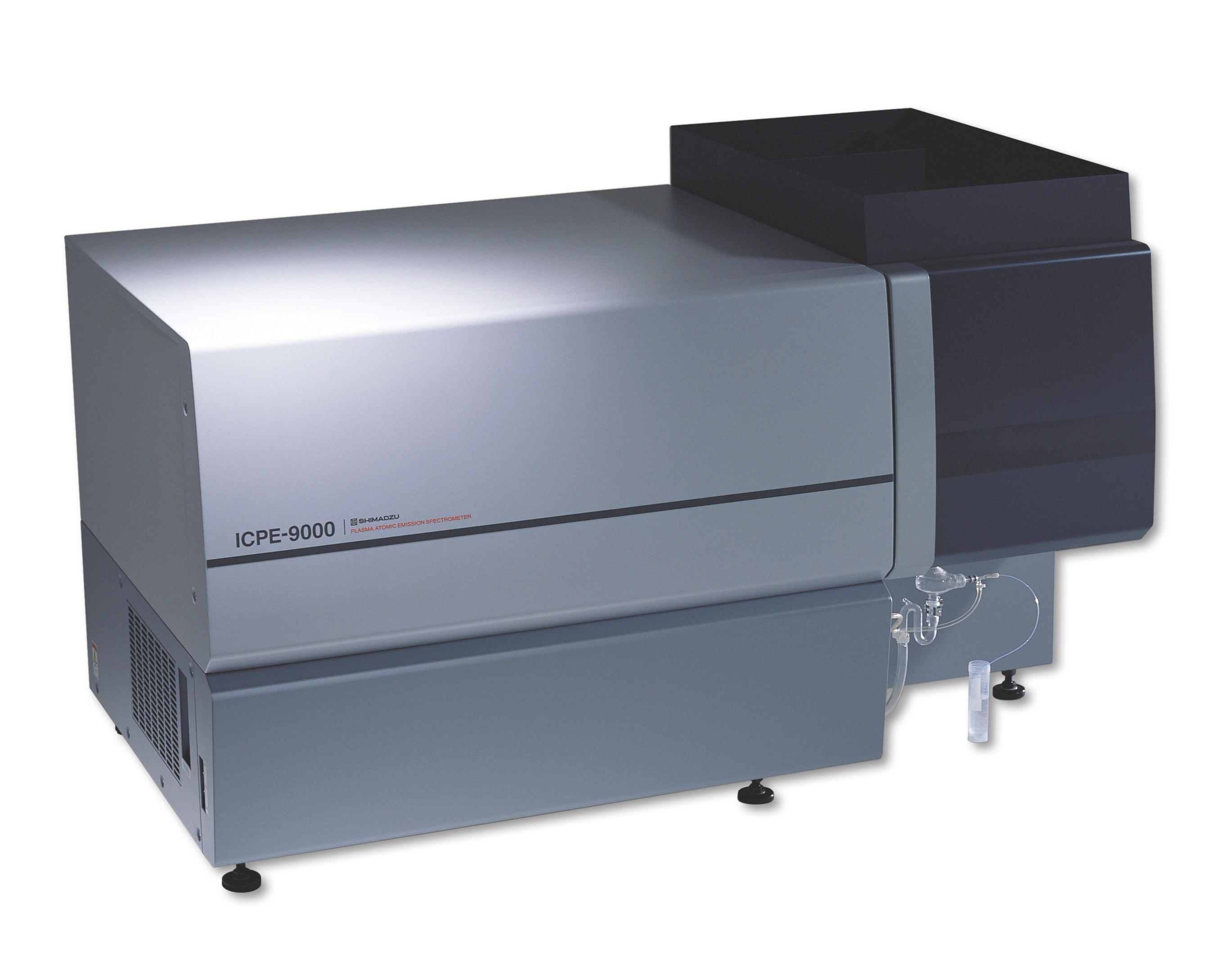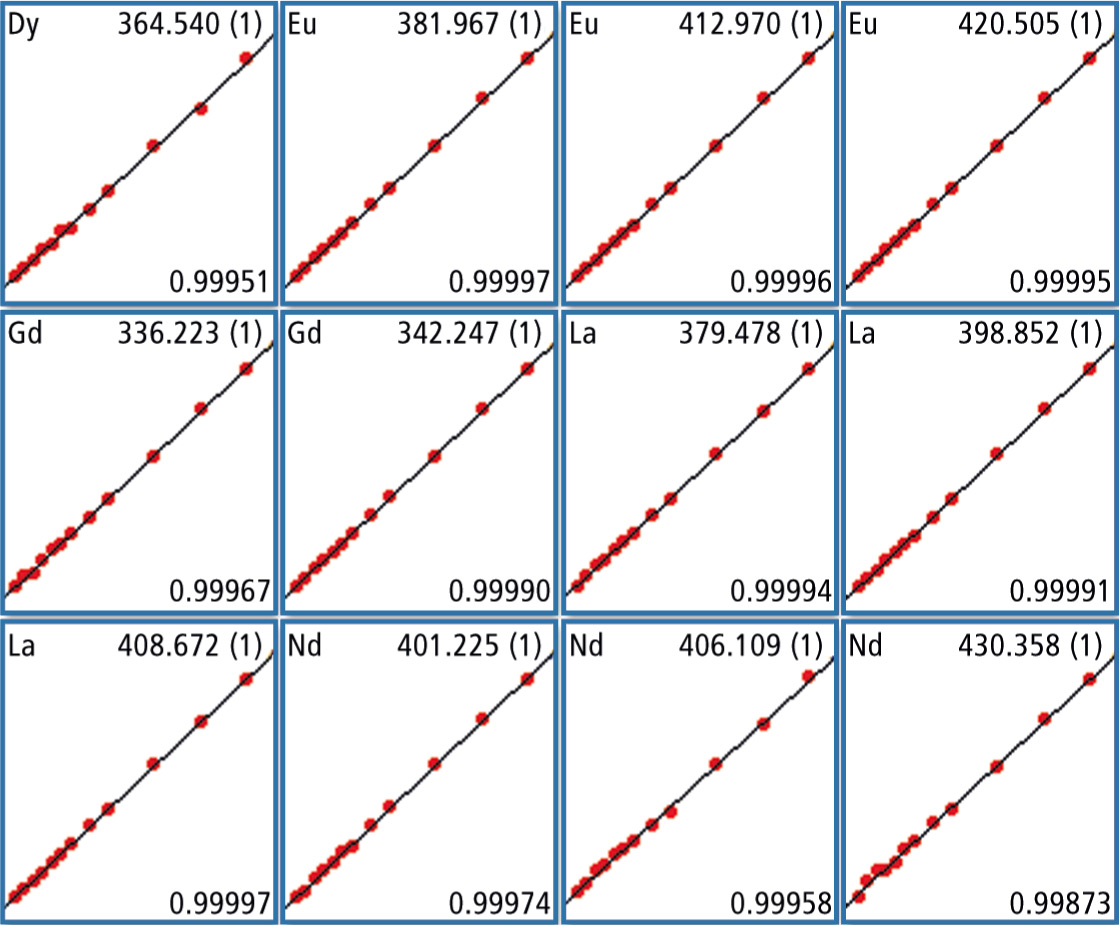Determination of Rare Earth Elements in electronic waste
ICP-OES spectrometry
According to IUPAC definition, Rare Earth Elements (REE) are a selection of seventeen elements from the periodic table of elements. In contrast to their name, the REE are present in the Earth’s crust much more than expected. Due to their geochemical properties Rare Earth Elements are typically dispersed, and an economic treatment of rare earth minerals and ores is difficult. Nowadays, the biggest ore deposits of REE are located in China (Mongolia) which controls the global market.
As REE are required in the electro- and electronics industry the demand for special metals is booming. In European countries, it may be worthwhile to recycle electronic waste in order to be independent of expensive imports [1].
 Figure 1: ICPE-9000 simultaneous ICP-OES spectrometer with dual view
Figure 1: ICPE-9000 simultaneous ICP-OES spectrometer with dual view
The Shimadzu ICPE-9000 (Fig. 1) has been optimized for the determination of Rare Earth Elements. This simultaneous ICP-OES spectrometer was used in experiments on electronic waste material such as mobile phones, notebooks, electronic boards and more. Samples were prepared applying crushers and mills, homogenized and finally digested in a microwave digestion procedure.
System configuration for REE analysis optimized
Quantitative determination of the Rare Earth Elements has been carried out using the ICPE-9000 spectrometer and ICPESolution software version 1.31. The simultaneous spectrometer with vacuum optics is especially suitable for fully automatic multi-element analysis of large sample sequences and is characterized by its high flexibility. For instance, the determination of REE must be possible in presence of major elements from the sample matrix such as copper, iron, tin and zinc, in a single method through the application of axial and/or radial plasma observation. Various parameter sets can be executed within one method, which allows the optimization of the system configuration for different sets of samples with high precision and low limits of determination.
The user wavelength registration function is just one important feature of ICPESolution software version 1.31. It allows that analytical wavelengths which are not included in the analysis database can be added by the operator. This function is very useful in view of a huge number of hundreds of analytical wavelengths available for REE in the literature. The key of success for the REE analysis is the proper selection of the optimum lines. A selection of a few analytical wavelengths which have been used for calibration is shown in figure 2.
 Figure 2: Calibration curves of selected Rare Earth Elements
Figure 2: Calibration curves of selected Rare Earth Elements
In a qualitative and quantitative analysis experimental data on standard solutions and sample solutions have been obtained using the instrumental parameters in table 1.
 Table 1: Instrumental parameters for determination of REE
Table 1: Instrumental parameters for determination of REE
References:
1. The EU’s Developing Raw-Materials Diplomacy, Bertelsmann Foundation, 2011